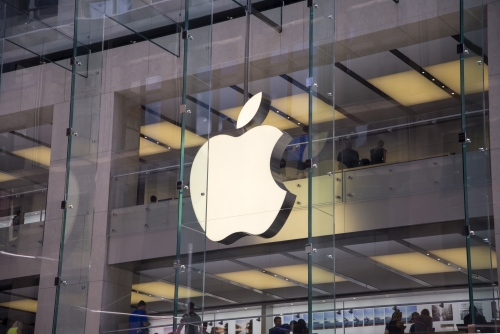Apple Inc [NASDAQ:AAPL]: the trillion dollar company.
Did you know most of Apple’s value comes from what you can’t see?
Take a look at the company’s balance sheet. They have just hit US$114 billion in equity (assets less liabilities).
This might sound like a lot. But Apple (the stock), trades for almost nine times that.
That means if Apple was to sell all of their assets and pay outstanding bills, investors might only receive $23 a share. And that’s only if Apple’s balance sheet values are accurate.
So why is the company trading for more than $222 a share? Where did all this extra value come from?
Why is Apple valued so highly?
A glance at Apple’s income statement and things start making more sense.
They make about US$230 billion in sales, which is growing at about 8% a year. More than 20% of that drops into profits.
And a lot of that cash Apple hardly needs. If they’re not buying back stock, then cash is accumulating on the balance sheet.
So how are Apple’s sales, profits and cash flows growing? It used to be that businesses would invest in income producing assets to increase sales.
Companies like Exxon Mobil Corporation [NYSE:XOM], General Electric Company [NYSE:GE] and AT&T Inc. [NYSE:T] were some of the largest in the world just a decade ago.
And for the most part, they all had to spend money to make money.
Exxon still spends billions on machinery to find and bring up oil from the ground. GE also spends a good chunk of cash on physical assets. AT&T is worst of the bunch. For years they’ve spent close to 60% of annual cash flow on assets.
And that’s just how it is. All three have to spend billions to make billions.
Compare this to Apple, who spends 17% of annual cash flow on assets, and you’re probably left with some questions.
Not only is spending lots of cash optional. Apple is growing sales and earnings while doing it.
But they’re not the only ones. [openx slug=inpost]
Companies like REA Group Ltd [ASX:REA], SEEK Ltd [ASX:SEK] and Alphabet Inc. [NASDAQ:GOOG] have the same characteristics.
They’re all growing sales without heavy investments into physical assets. It’s no wonder why these stocks trade at much higher multiples than the norm.
They’re all pulling millions (billions for Apple and Google) of dollars right out of thin air, so to speak!
You see, Apple’s value is made up of physical assets. But it also includes their intangible ecosystem.
Consider Apple’s products…highly sought after, stylish and simple. Not only do these products have value themselves, the fact that they form an ecosystem also gives them value.
Business Insider writes:
‘That ecosystem is part of the reason why many iPhone users will also use a Mac computer and vice versa, as some features wouldn’t work if you mixed it up with a Windows computer or an Android phone.
‘…Of course, Microsoft has its own ecosystem, and so does Android/Google. But if you own an Apple device and you’re mixing ecosystems, you’d be missing out on a handful of features that you won’t find on other ecosystems. Sure, you can find apps for Windows or Android that offer similar functionality, but they don’t work as simply or seamlessly as they do on Apple’s ecosystem.’
Or what about REA, owners of realestate.com.au? Their most valuable asset isn’t a tangible one. REA Group’s most valuable assets are the buyers and sellers that visit their site each month.
This network isn’t something tangible. But the bigger this network becomes, the more valuable REA becomes.
The listings will follow the buyers and vice versa. And because of REA’s massive network, they pull in more than $800 million in sales, growing 20% annually.
How to value intangible assets
We’re now faced with an interesting question, how do you value these intangibles?
One way is to value them like any other asset: figure out the amount of cash these intangibles generate and discount it to the present.
Alternatively you could value these intangibles at the cost. That might be the more conservative approach.
In reality, there’s no one size fits all. You’re going to have to use your judgement. It could be very difficult defining how much ‘earnings’ you should attribute to Apple’s brand or the cost at which it took to get it.
But it’s important you start thinking about questions like these before most companies start looking the same.
It’s hard to argue we’re not running fast into a New Economy.
You might remember in yesterday’s Money Morning I wrote about New Retail — a digitalised version of retail. The same could happen to business in general.
They’ll use technology to improve sales and minimise costs. Many will heavily invest to develop intangible assets.
And because you’ve kept learning, you’ll be better positioned to sort the stocks that could deliver OK returns from the ones that could make life-changing gains.
Your friend,
Harje Ronngard
